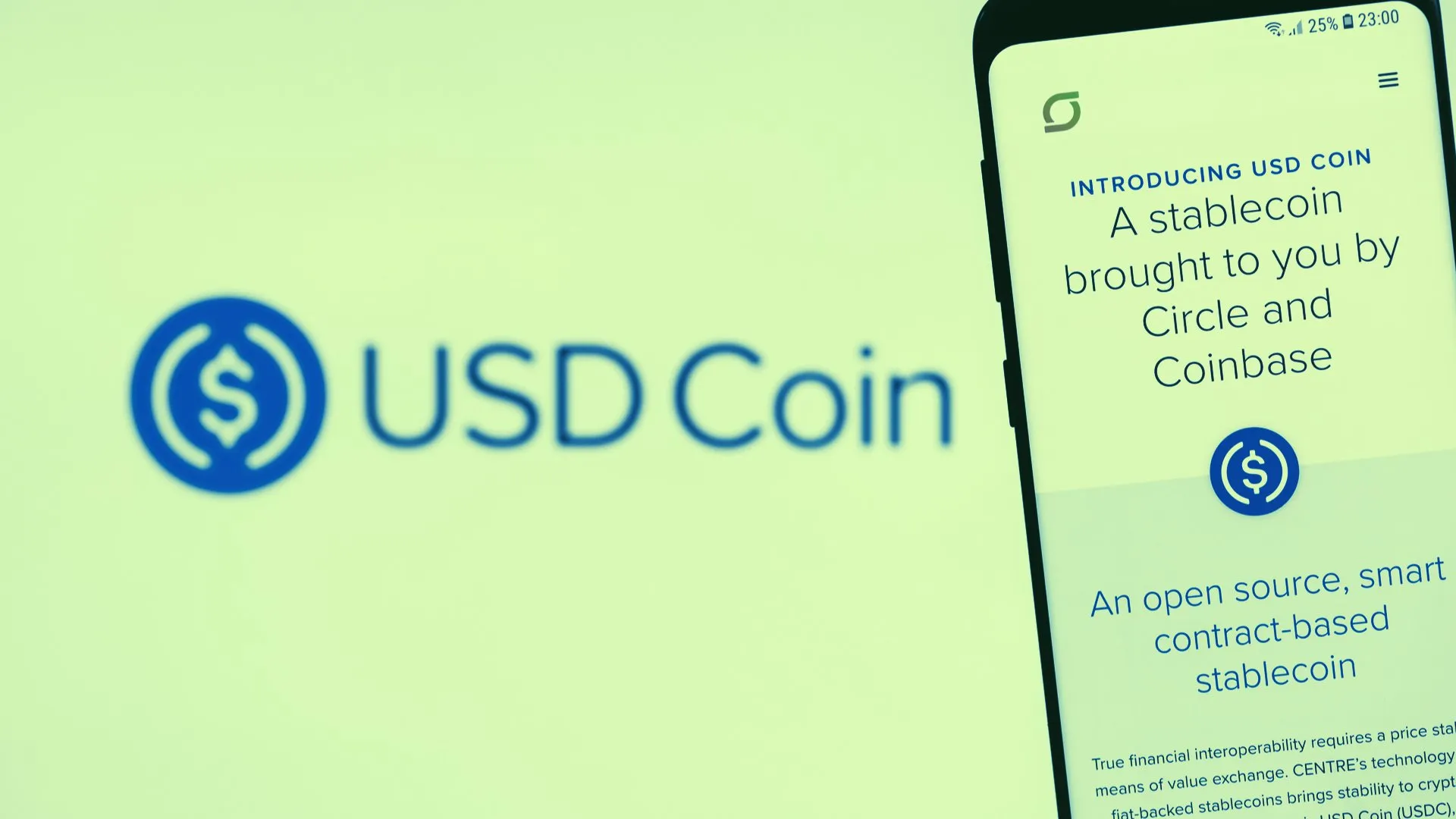In brief
- The supply of Coinbase-backed stablecoin USDC is rapidly approaching $2 billion, having grown 80% in two months.
- Other stablecoins have posted impressive increases as well, with DAI and Binance’s BUSD growing more than 700% so far this year.
- USDC's rise corresponds with a DeFi boom, as well as several in-built advantages over competitors.
We do the research, you get the alpha!
There seems to be no stopping the growth in the supply of stablecoins, but Coinbase-backed USDC in particular has reported massive gains this year to become the second-most used stablecoin.
The total supply of USDC has topped $1.8 billion, rising more than 80% since the beginning of July and more than 250% since the beginning of 2020, according to data collected from Coin Metrics.
USDC is a centralized dollar-pegged stablecoin issued by the Centre Consortium, founded as a collaboration between Coinbase and payment service company Circle. USDC was launched in September 2018, and more than 500 million USDC had been issued by the beginning of 2020.
Why stablecoins?
The stablecoin market as a whole has grown this year.
Paxos PAX stablecoin supply has increased 28% YTD to more than $285 million, while Binance’s BUSD and Huobi’s HUSD exchange-backed offerings have increased 725% to $255 million and 50% to $144 million, respectively.
DAI, a stablecoin issued by crypto loan protocol Maker, has also seen steady growth through 2020, with supply increasing nearly 700% from the start of the year to an all-time high of $335 million in early September.
Of course, even the value of all other stablecoins combined, more than $2.8 billion in total, pales in comparison to the supply of USDT stablecoin assets issued by Tether, now more than $14.5 billion. Use of that stablecoin option in East Asia is “off the charts,” according to “blockchain research firm Chainalysis.”
Growth in stablecoin supply has likely been spurred on by the recent explosion in DeFi’s yield farming popularity, where liquidity providers are rewarded for staking stablecoins and other digital assets in DeFi protocols for use in loan issuance and other financial activities.
In short, stablecoins provide an onramp to decentralized finance, which is booming. As of January 1, users had locked in $690 million in DeFi protocols; now, more than $7 billion is locked in. Though Ethereum and Bitcoin can also be used as collateral, a rising tide lifts all boats, including stablecoins.
But why USDC?
The popularity of USDC compared to other stablecoin assets could have several origins.
First, USDC was the first Ethereum-based stablecoin to be released after Tether in 2018, and had already issued a supply of more than $400 million before competitors like Huobi’s HUSD and Binance’s BUSD were launched approximately a year later (and DAI another year later), creating a strong first mover advantage.
Second, the acceleration in USDC issuance may be powered in part by the August 27 release of USDC version 2.0, an upgrade that improved security by transitioning some administrative USDC-related tasks to on-chain processes and allowed integrated projects to pay gas fees for users when transacting with USDC.
Third, as it’s supported by and easily obtained on Coinbase, USDC is also likely the first stablecoin asset to which many new crypto users are exposed, and it remains a prominently displayed option for more experienced Coinbase users seeking to move from cryptocurrencies with more volatile prices into the dollar-pegged stable assets.
That’s a point Circle CEO and Chairman Jeremy Allaire agrees with. “It is very straightforward for both retail and institutional customers to easily both get and redeem USDC,” he told Decrypt earlier this week.
Finally, it’s also cheaper in some instances, a big plus for users looking to apply it to DeFi lending protocols. Denis Vinokourov of brokerage Bequant earlier acknowledged to Decrypt: “Even with the recent capital outflow, it remains cheaper to borrow USDC on Aave at 6.40% APY vs DAI at 7.47% APY.”
As some sectors of the crypto market falter and others ascend, the demand for stablecoins shows no signs of slowing down. USDC, thus far, has been one of the big winners of that trend.
Editor's note: This article has been updated to reflect that USDT was the first stablecoin to be released. Further, Ethereum-based Tether was launched in early 2018, not 2017, as previously stated.
Disclaimer
The views and opinions expressed by the author are for informational purposes only and do not constitute financial, investment, or other advice.





